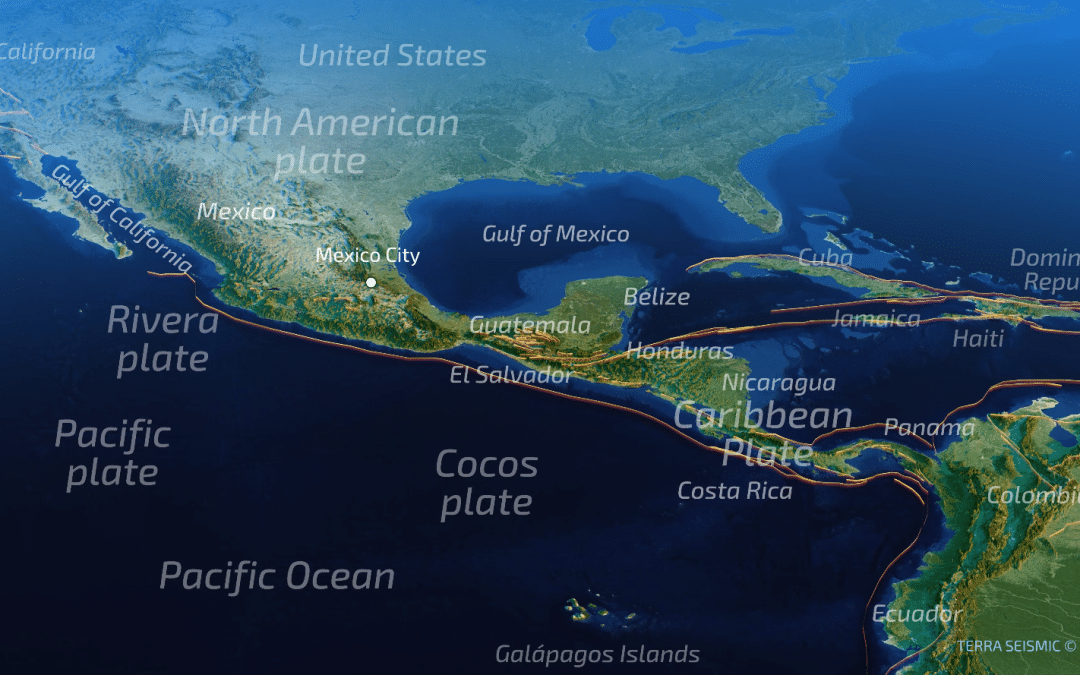Seismicity in Mexico is significantly influenced by its geographical position atop complex tectonic settings, where several major tectonic plates interact. This includes the North American Plate, the Pacific Plate, the Rivera Plate, and the Cocos Plate. The interaction of these plates makes Mexico highly prone to seismic activities, including frequent and sometimes powerful earthquakes.
Subduction Zones: The primary source of Mexico’s seismic activity is the subduction of the Cocos Plate beneath the North American Plate along the Middle America Trench on the southern coast and the Rivera Plate beneath the North American Plate along the Rivera Trench in the northwest. These subduction zones are capable of generating powerful megathrust earthquakes.
Trans-Mexican Volcanic Belt: This volcanic belt stretches across central Mexico and is also a significant seismic zone. It is associated with the subduction of the Cocos Plate and is home to several active volcanoes. The tectonic activity in this region often results in volcanic and tectonic earthquakes.
Crustal Earthquakes: In addition to subduction-related earthquakes, Mexico also experiences crustal earthquakes within the North American Plate. These earthquakes can occur at significant distances from the plate boundaries and are caused by regional stresses and local fault systems.
San Andreas Fault System: The northern extension of this fault system affects the Baja California peninsula and is a significant source of seismic hazard. It primarily causes strike-slip (horizontal) movements, leading to earthquakes along the boundary between the Pacific Plate and the North American Plate.
Historical Seismicity: Mexico has a long history of destructive earthquakes, such as the 1985 Mexico City earthquake and the 2017 Puebla earthquake, which have profoundly impacted urban development, building codes, and disaster preparedness strategies.
Tsunami Risk: The seismic activity along Mexico’s Pacific coast also poses a tsunami risk, particularly from earthquakes in the subduction zones, which can generate significant tsunamis affecting coastal and port cities.
Seismic Monitoring and Building Regulations: In response to the high seismic risk, Mexico has developed an extensive seismic monitoring network and strict building codes aimed at reducing earthquake risks, particularly in urban areas like Mexico City, which is especially vulnerable due to its soft lake-bed soil that amplifies seismic waves.
These factors combine to make Mexico one of the most seismically active countries globally, requiring continuous monitoring, robust engineering, and effective disaster management to mitigate the impacts of earthquakes.

